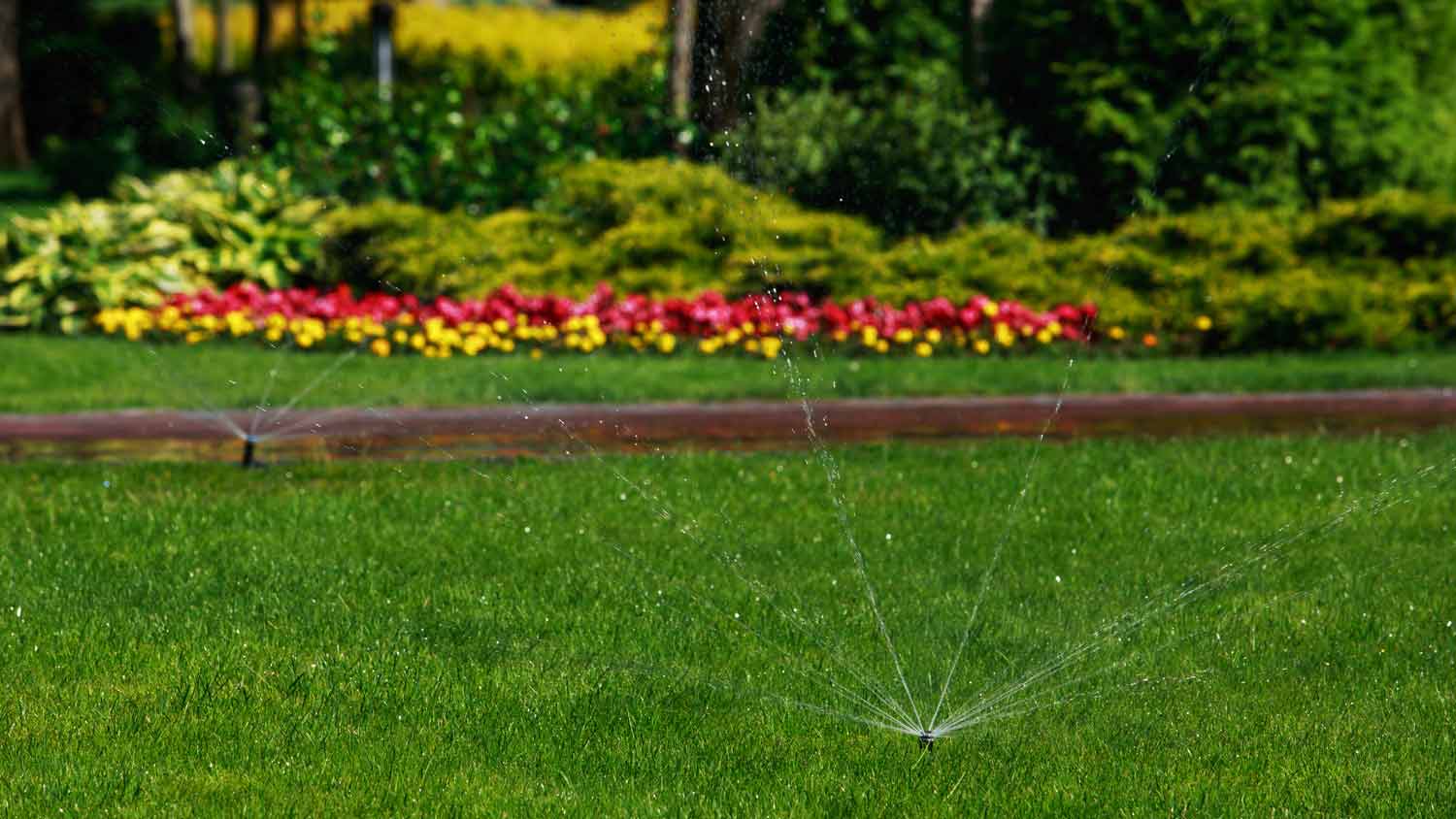
Find out the average sprinkler system repair cost, what impacts pricing, and how to save. Get transparent estimates to plan your sprinkler repair project.
Keep your sprinkler heads clean and your lawn green


Keeping your sprinkler heads clean is an important step toward maintaining both your pristine landscaping and the irrigation system itself. If you need a little help, we can guide you through how to clean sprinkler heads in a flash.
First things first, you’ll want to make sure you have all your tools on hand and know where your sprinkler heads are located. (As you’ve likely gathered, we’re talking about lawn sprinklers—not home fire sprinklers. Just to make sure.)
For each sprinkler head, you’ll first pull it up out of its line in the ground. If you can’t get a grip on the sprinkler head to pull it up, use a flathead screwdriver. Just be careful not to damage any components.
Once you’ve pulled the sprinkler head up, you can place the adjustable vise-grip pliers at its base to ensure it won’t fall back into the ground if you let go of it.
You should be able to unscrew the heads by hand, but the vise grips can help if the sprinkler head is stuck. Remove both the sprinkler head and the screen beneath it using the needle-nose pliers for the screen if necessary.
Use the towel to keep dirt off your hands and remove any obvious debris from the components. Keep an eye out for any components that seem damaged or defunct—you may need to replace them.
You can achieve a deeper clean by soaking the sprinkler heads in a 1-to-1 mixture of water and white vinegar.
Create your mixture in a plastic bin. Swirl the sprinkler components through the water to remove additional debris, and then allow them to soak for half an hour. Give them one more swirl before removing them from the tub to dislodge any remaining grit.
While your sprinkler components are soaking, walk to your sprinkler control box and briefly flush out each sprinkler line individually to remove any remaining dirt or debris left behind. The stream of water that comes out could be quite powerful (and totally soak your landscaping), so be sure to only run the line for a few seconds.

Once your sprinkler heads and screens are clean and your lines have been flushed, go ahead and reassemble them in the opposite way from how you took them apart. Again, pliers may be useful (even if they’re not required).
Once the sprinkler heads are back together, check to ensure the spray pattern is correct and make sprinkler head adjustments accordingly. If you’re having further problems or simply want to keep your jeans clean this weekend, reach out to a sprinkler repair pro near you for help.
From average costs to expert advice, get all the answers you need to get your job done.

Find out the average sprinkler system repair cost, what impacts pricing, and how to save. Get transparent estimates to plan your sprinkler repair project.

A French drain costs around $9,250 to install, but several factors will determine the final price you pay. Learn the cost to install French drains in this guide.

Discover the cost to winterize a sprinkler system, including average prices, key cost factors, and tips to save. Learn what impacts your estimate and how to budget.

A sprinkler system saves time and money, but what are the pros and cons of a drip irrigation system? Here’s what you should consider.

If your sprinkler head is popping up but not spraying, you could have a clog. Learn the main causes of this problem and how to fix them.

Learning how to set your sprinkler timer doesn’t have to be a hassle, no matter which model you bought. Read on to learn your way around any sprinkler system.